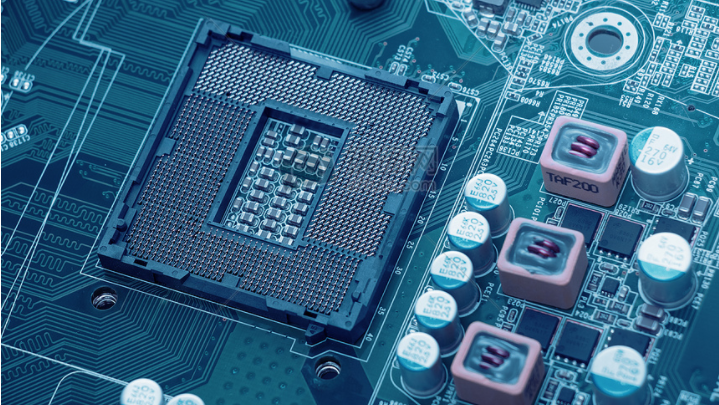Are you trying to determine the LED circuit board supplier? Let us see if we can help. In this article, we will introduce the advantages of LEDPCB and its applications. Wne also discussed material selection and production issues. The manufacturing process of the LED board is difficult, and there are many considerations. let's start.
What is LEDPCB?
Compared with standard lighting products, light-emitting diodes have many advantages. However, the light output of a single LED is relatively low. One way to increase the light output is to connect many LEDs to the PCB or LED circuit board. When current flows through the LED, it will emit light. But as the current increases, the heat output by the LED will also increase. This is a problem because high temperature will reduce the LED light output. Therefore, manufacturers use the circuit board layer to conduct heat away from the LED.
LEDPCB material
When choosing an LEDPCB substrate, you should carefully consider the thermal properties of the material. Weight, size, and cost are also important. Substrate material options include:
FR4PCB raw materials
CEM-1PCB raw materials
CEM-3PCB raw materials

The ic layer will serve as a useful link between the IC and the heat sink. Different from FR4. Copper and aluminum PCB materials
Copper core PCB material
Ceramic-based PCB materials
Each material is good or bad. For example, metals and ceramics have better thermal properties than laminates. The CEM-1 board is low in cost, but it is fragile compared to FR4 and CEM-3 boards.
Ceramic-based PCB uses materials such as alumina. There are other materials with better thermal properties, but they are more costly. A similar trade-off applies to metal core PCB materials, including aluminum and copper.
The benefits of LEDPCB and LED lighting industry
Compared with traditional lighting, LEDPCB has many advantages. These include:
Lower power consumption
Longer service life
More efficient
Very compact
Mercury free
You can shape the lighting board and change the color of the LED to create interesting lighting effects.
Application of LEDPCB
The recognition of the benefits of LED circuit boards is increasing. Therefore, the number of applications is also increasing. Some examples are:
car.
medical.
computer.
telecommunications.
army.
Traffic lights and signal lights.
LED lights for indoor agriculture.
Various market forces are increasing demand. These include improving LED technology, green energy demand and reducing costs. Therefore, the compound annual growth rate (CAGR) of the LED circuit board lighting market is expected to be 14.25% from 2021 to 2026.
LEDs can be surface mounted and lead packaged. Because surface mount devices (SMD) are small and thin, they are the first choice for multi-device applications.
SMDLED assembly requires a high level of manufacturing skills. Manufacturers must install LED circuits and circuit board accessories on small PCBs. Therefore, the production of LED lighting panels requires pick and place equipment.
The process involves printing solder paste onto pads on the PCB. The next step is to place the surface mount LED on the pad. It is then heated to form solder joints.
The placement accuracy of LED components is very important. In addition, the solder paste must be level and within the specified thickness range. In order to prevent damage to the LED device, it is important to control the amount of heat applied.
Aluminum LED circuit board
The construction of printed wiring boards involves laminating four layers of materials. They are screen printing, solder mask, copper layer and substrate.
The manufacturer connects the SMDLED to the surface of the PCB. Since they encapsulate many SMD devices in a small area, this will increase heat. Therefore, the LEDPCB board uses a metal substrate to transfer heat from the thermal LED. The substrate is electrically insulated from the circuit by a dielectric material.
Things to consider when determining the best layout. Options such as aluminum are common choices for metal substrates. It is durable and its size will not change when under pressure. Although it is a copper core PCB, it is still a mixture of specific metal alloys.
However, the thermal conductivity of aluminum is not as good as copper, and it is cheaper.
Choose LEDPCB manufacturer
When choosing a manufacturer, it is important to ensure that they have relevant experience. The manufacture of LEDPCB is difficult. It requires surface mount processing knowledge and equipment.
Can meet your requirements
Ensure that the LEDPCB supplier can meet your production volume and delivery requirements. Considering the specifications and quality level, their cost should be reasonable.
Customer/supplier partnership
The supplier should respond to your request. First of all, they should work with you to improve your LEDPCB lamp products. Then, they should also help you reduce costs.
Quality manufacturer
There are many factors to consider, including the type of LED. It is important to choose your manufacturer carefully to ensure continuous delivery of quality products.
in conclusion:
The advantages of LED lighting are obvious, and more applications may turn to LEDPCB in the future. When the LED circuit board is the right choice for your application, please choose your PCB manufacturer carefully.
Thermal management is very important, so choose the correct circuit board technology. Aluminum LED circuit boards have many advantages and are a common solution.
Look for manufacturers who can overcome the challenges of circuit board manufacturing. They should be able to deliver reliable products on time and at an acceptable cost.